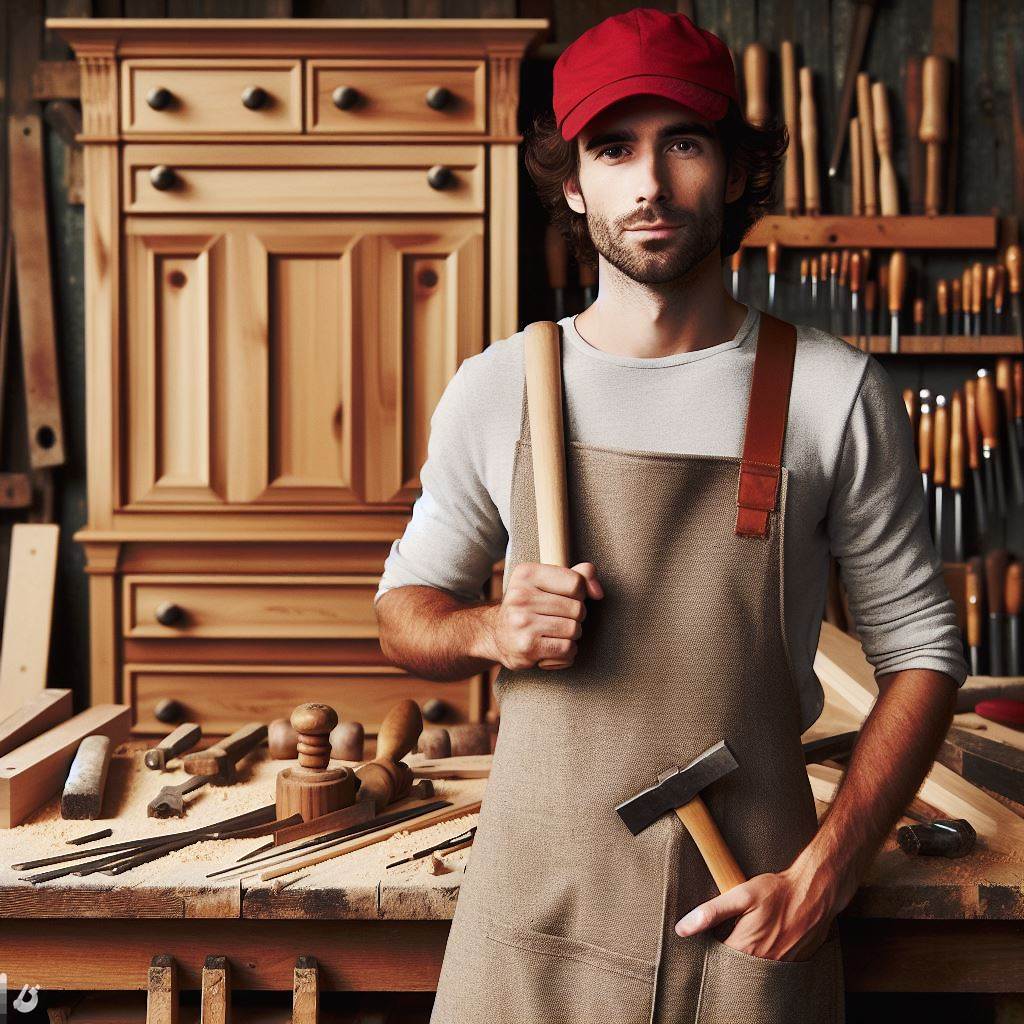Introduction
Craftsmanship defines joinery in the UK—precision and skill melded to create functional and aesthetic wonders.
In the ever-evolving realm of joinery, staying abreast of trends is pivotal for professionals. It’s the key to unlocking innovation.
Embark on a journey through the upcoming trends in UK joinery for 2024. This blog decodes what’s hot and happening.
Crafting masterpieces, joinery in the UK is an art form, merging tradition with contemporary precision.
In an industry where each detail matters, trends are the compass guiding joinery professionals toward excellence.
Dive into the blog post to unravel the mysteries of joinery’s future in the UK. From materials to techniques, discover it all.
Technological Advancements in Joinery
Joinery, the art of crafting woodwork, has undergone significant changes in recent years due to advancements in technology.
These technological innovations have revolutionized the joinery industry, allowing craftsmen to create high-quality products with improved precision and efficiency.
In this section, we will explore the impact of technology on joinery trends in the UK and delve into specific technological advancements that have shaped the industry.
The Impact of Technology on Joinery Trends
Technology has played a crucial role in shaping the joinery industry, making it more efficient and accessible.
Traditional joinery methods have been enhanced by the introduction of advanced machinery and tools.
This leads to a rise in productivity and the ability to meet the growing demand for custom-made joinery products.
Use of Advanced Machinery and Tools in Joinery Processes
The adoption of advanced machinery and tools has significantly improved the joinery process.
Computer Numerical Control (CNC) machines, for example, have transformed the way joinery workshops function.
These machines can accurately cut, shape, and carve wood pieces based on computer-aided designs, ensuring precise and high-quality craftsmanship.
Personalized UK Career Consulting
Receive tailored career guidance designed just for you. Get actionable steps and expert support to boost your career in 1-3 days. Take control of your career now.
Get StartedAdditionally, advanced tools such as laser cutters and edge banders have made it easier and faster to achieve intricate designs and seamless finishes.
These tools provide joiners with greater versatility, enabling them to experiment with different styles and techniques.
Incorporation of Automation and Robotics in Joinery Production
Automation and robotics have emerged as game-changers in the joinery industry, streamlining production processes and increasing efficiency.
By automating repetitive tasks, joiners can focus on more complex and creative aspects of their work.
Robotic systems are now capable of performing a wide range of joinery tasks, such as sanding, drilling, and assembly.
This not only reduces labor costs but also ensures consistent quality, as machines can execute tasks with precision and accuracy.
Improved Precision and Efficiency in Joinery Work
Technological advancements have significantly enhanced the precision and efficiency of joinery work.
With the use of digital measurement tools and laser-guided cutting systems, joiners can achieve unparalleled accuracy in creating complex joinery pieces.
Furthermore, the integration of software programs and 3D modeling has allowed joiners to visualize and simulate their designs before production.
This eliminates costly mistakes and enables clients to have a clear understanding of the final product.
Examples of Specific Technological Advancements in the Joinery Industry
Several specific technological advancements have transformed the joinery industry.
For instance, the use of computer-aided design (CAD) software has revolutionized the way joinery projects are conceptualized and executed.
Another significant advancement is the development of eco-friendly joinery solutions.
With a growing focus on sustainability, joiners have started using advanced machinery to minimize waste and maximize the utilization of resources.
Your Dream Job Starts with a Perfect CV
Get a tailored CV and cover letter that captures your unique strengths and stands out in your industry. Let us help you make an unforgettable first impression.
Get StartedFurthermore, the introduction of smart technology in joinery products, such as adjustable smart furniture and automated lighting systems, has gained popularity among consumers.
In essence, technology has played a vital role in shaping joinery trends in the UK.
The incorporation of advanced machinery, automation, and robotics has enhanced precision, efficiency, and creativity in the industry.
Joiners can now deliver high-quality bespoke products, thanks to the innovative tools and techniques available.
As technology continues to evolve, joinery will undoubtedly see further advancements, driving the industry forward.
Read: Eco-Friendly Practices in UK Joinery Today
Sustainable Joinery Practices
In recent years, sustainability has become a growing concern in the construction industry.
As people become more conscious of the environmental impact of their choices, the joinery sector has seen a shift towards the use of eco-friendly materials and practices.
In this section, we will explore the trends and initiatives that are shaping sustainable joinery in the UK.
Growing importance of sustainability in the construction industry
- Increased awareness of environmental issues has led to a greater emphasis on sustainable practices in construction.
- Builders, architects, and consumers are seeking ways to minimize the industry’s carbon footprint.
- Regulations and policies are being implemented to encourage sustainable construction practices.
- Joinery, being an essential part of construction, is also experiencing this push towards sustainability.
Trends towards using eco-friendly materials in joinery
- Traditional materials like timber are being replaced by more sustainable alternatives.
- Bamboo, for example, is a fast-growing and renewable resource that is gaining popularity in joinery.
- Recycled materials, such as reclaimed wood or plastic, are also being used in innovative ways.
- Eco-friendly paints and finishes with low or no VOCs (Volatile Organic Compounds) are being preferred.
Sustainable joinery certifications and standards
- Industry bodies are introducing certifications to identify joinery products and practices that meet sustainability criteria.
- Certifications like FSC (Forest Stewardship Council) ensure that timber used in joinery comes from responsibly managed forests.
- Joinery companies are striving to obtain these certifications to showcase their commitment to sustainability.
Implementation of energy-efficient practices in joinery production
- Joinery workshops are adopting energy-saving measures to reduce their carbon footprint.
- Investments in new machinery and technology that consume less energy and produce minimal waste.
- Efficient waste management systems are being implemented to minimize the environmental impact of production processes.
Examples of sustainable joinery projects in the UK
- The Olympic Park in London utilized sustainable joinery for its infrastructure, ensuring minimal environmental impact.
- Various housing projects across the UK are incorporating sustainable joinery solutions to achieve energy efficiency.
- Renovation projects of historical buildings are using sustainable joinery techniques to preserve their heritage.
- Public buildings, such as schools and offices, are opting for sustainable joinery to create healthy and eco-friendly spaces.
In general, sustainability has become a driving force in the joinery industry.
From the use of eco-friendly materials to the implementation of energy-efficient practices, the UK is witnessing a shift towards a greener approach to joinery.
Certifications and standards help identify sustainable products and practices, while successful projects showcase the possibilities of sustainable joinery.
With continued efforts, the industry can make a significant contribution to environmental preservation and create a more sustainable future.
Read: UK Joiners’ Salary Guide: Expectations vs. Reality
Optimize Your LinkedIn for Success
Boost your LinkedIn profile with a professional bio, keyword-rich headline, and strategic recommendations that attract recruiters. Stand out from the crowd and get noticed.
Optimize Now
Innovative Designs and Materials
Joinery is not just about functionality; it is also about design and aesthetics. In 2024, we can expect to see some innovative designs in the field of joinery.
Design plays a crucial role in determining the overall look and feel of a joinery piece. It sets the tone for the entire space and creates a visual impact.
Emerging trends in joinery designs for 2024
One emerging trend in joinery designs for 2024 is the use of organic shapes and curves. These designs bring a sense of movement and fluidity to the space, making it more visually appealing.
Another trend is the incorporation of sustainable and eco-friendly materials in joinery.
With growing environmental concerns, designers are opting for materials that are not only visually pleasing but also have a low impact on the planet.
Exploration of new materials being used in joinery
Exploration of new materials is also an ongoing trend in joinery.
Designers are looking for alternatives to traditional materials like wood, such as metal, glass, and even concrete, to create unique and contemporary designs.
One particular material that is gaining popularity in the joinery industry is reclaimed wood. It adds a rustic charm and character to the space, giving it a unique aesthetic appeal.
Use of reclaimed and recycled materials for a unique aesthetic
Reclaimed and recycled materials are also being used in joinery to create a sustainable and eco-friendly approach.
From using salvaged timber to repurposed metals, these materials add a touch of history and sustainability to the design.
Examples of innovative joinery designs and materials
Innovative joinery designs and materials can transform a space and make it stand out. For example, the use of glass in joinery allows natural light to flow through, creating an illusion of a larger space.
Metal joinery, on the other hand, adds a modern and industrial touch to the design. It brings a sense of strength and durability to the piece, making it a standout feature in any space.
Concrete, although unconventional, is also being used in joinery to create a contemporary and minimalist look. Its raw and unfinished texture adds an urban and edgy vibe to the space.
Basically, joinery trends in the UK for 2024 will focus on innovative designs and the use of new materials.
Designers are exploring organic shapes, sustainable materials, and reclaimed wood to create unique and visually appealing joinery pieces.
These trends not only enhance the functionality of the space but also create a unique aesthetic that adds character and style.
Read: Top UK Joinery Schools & Training Programs
Client Preferences and Customization
Importance of catering to individual client preferences
Understanding and meeting the unique preferences of clients is crucial in the joinery industry.
By listening to their needs and desires, businesses can provide tailored solutions that exceed expectations.
Creating an enjoyable experience for clients builds trust and loyalty, leading to repeat business and positive referrals.
Growing demand for customized joinery products
In today’s market, consumers seek products that reflect their personal style and taste.
This has created a surge in demand for customized joinery products across the UK.
Homeowners and businesses now prioritize unique designs that add character and distinctiveness to their spaces.
Trends towards tailored joinery solutions
Gone are the days of one-size-fits-all joinery products.
Consumers are increasingly embracing tailored joinery solutions that cater to their specific requirements.
From bespoke furniture pieces to custom-built storage solutions, the demand for tailored joinery is on the rise.
Integration of technology to facilitate customization
Advancements in technology have revolutionized the joinery industry.
From computer-aided design (CAD) software to precision machinery, technology enables the seamless creation of customized joinery products.
Businesses that embrace these technological advancements gain a competitive edge by providing enhanced customization options to clients.
Case studies showcasing customized joinery projects
Several case studies demonstrate the successful realization of customized joinery projects.
From intricate cabinetry to elegant staircase designs, these projects highlight the unlimited possibilities of customization in joinery.
These real-world examples inspire and encourage both clients and joinery professionals to think outside the box.
The joinery industry in the UK has witnessed a significant shift towards client preferences and customization.
Understanding the importance of individual client preferences, businesses strive to provide tailored joinery solutions.
The integration of technology further facilitates customization, enabling the creation of unique and personalized products.
By showcasing case studies, the industry encourages creativity and innovation, pushing the boundaries of what is possible in joinery.
The future of joinery in the UK is undoubtedly focused on customization and meeting the diverse needs of clients.
Read: The Future of Joinery in the UK Explored
Conclusion
We have explored the joinery trends in the UK for 2024. It is crucial for joinery professionals to stay updated with industry trends to provide the best services to their clients.
The evolution of joinery in the upcoming years is exciting, with a focus on sustainable materials, innovative designs, and advanced technology.
As the demand for bespoke joinery continues to rise, professionals must adapt and embrace these trends to thrive in the industry.
By staying informed and adaptable, joinery professionals can position themselves as leaders in the field and deliver exceptional craftsmanship that meets the changing needs and preferences of clients.
The future of joinery in the UK looks promising, with endless opportunities for creativity and growth.
[E-Book for Sale]
500 Cutting-Edge Tech Startup Ideas for 2024 & 2025: Innovate, Create, Dominate
$19.99 • 500 Tech Startup Ideas • 62 pages
You will get inspired with 500 innovative tech startup ideas for 2024 and 2025, complete with concise descriptions to help you kickstart your entrepreneurial journey in AI, Blockchain, IoT, Fintech, and AR/VR.




